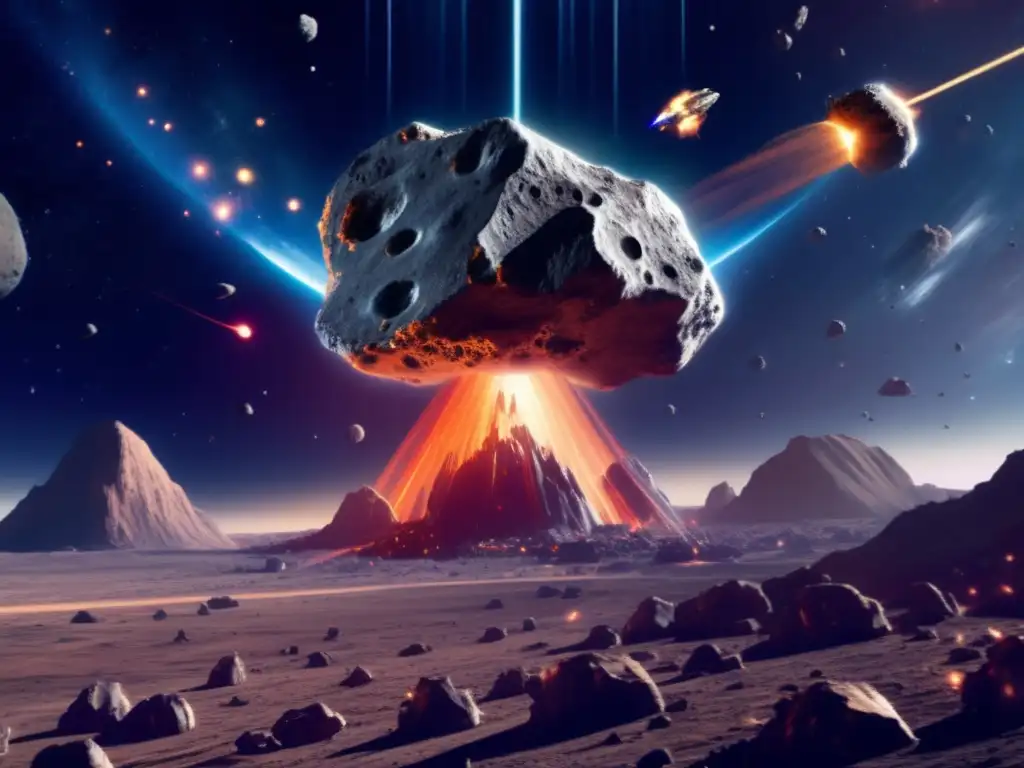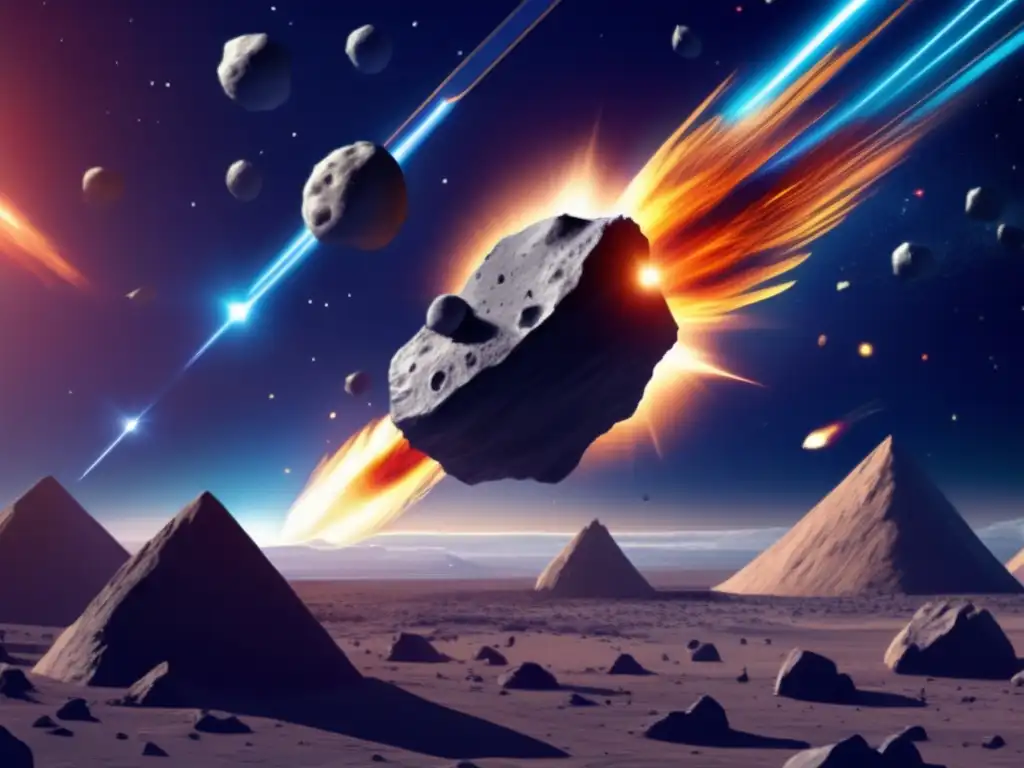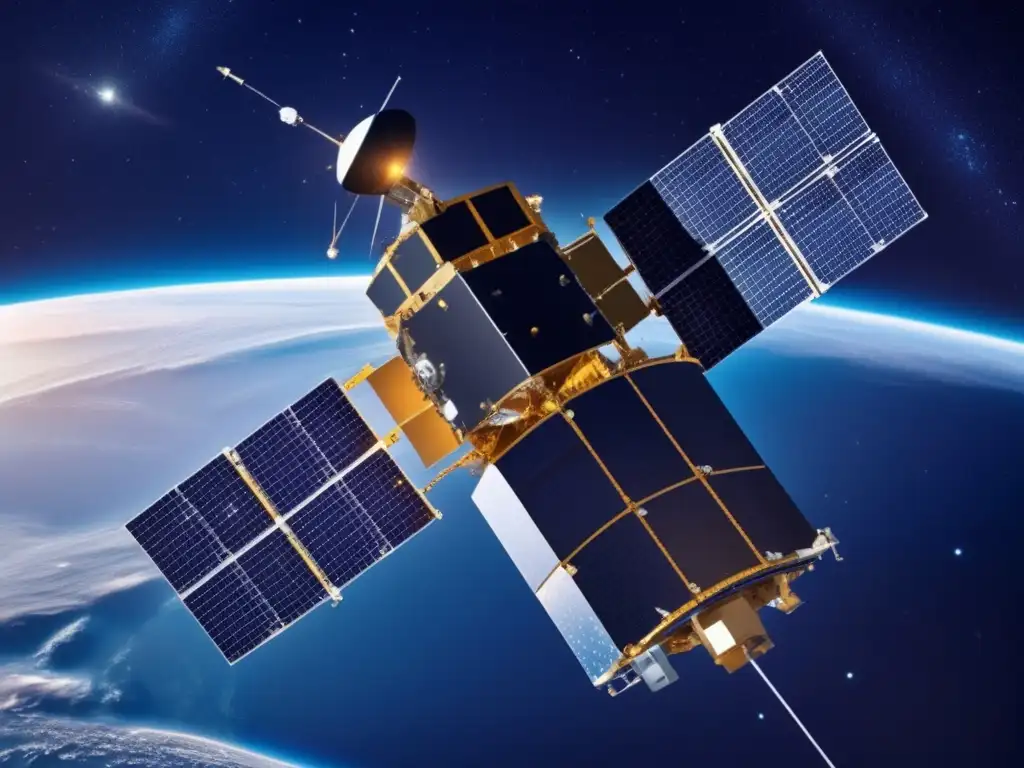Keeping The Cosmos At Bay: Strategies For Asteroid Defense

Introduction
Asteroids are small, rocky bodies that orbit the Sun, and can be found throughout our solar system. Many of these objects pose a potential risk to Earth, as they have the potential to collide with our planet and cause catastrophic damage.
In recent years, there has been a growing recognition of the need to develop effective strategies for asteroid defense, both to protect human lives and property, and also to help us better understand the origins and evolution of our solar system.
Planetary Defense

Our Cosmic Neighbors
One key strategy for protecting Earth from asteroid impacts is to observe and track near-Earth objects (NEOs) with telescopes and other instruments. By mapping out the orbits of these objects, we can identify any that pose a potential danger to our planet and begin taking steps to deflect or destroy them.
Deflection Techniques
If an asteroid is detected with enough time before impact, there are several techniques that could be used to deflect it off course. One approach would be to use a spacecraft to gently push the asteroid, altering its trajectory so that it no longer poses a threat. Another option would be to use a kinetic impactor, essentially slamming a spacecraft into the asteroid to change its velocity. A third option would be to use a focused beam of energy, such as a laser or a nuclear explosion, to heat up one side of the asteroid and cause it to emit gas and dust, creating a thrust that pushes it off course.
Preparedness and Mitigation
In addition to tracking and deflecting asteroids, it's important to be prepared for the possibility of a catastrophic impact. This could involve developing emergency response plans, ensuring that critical infrastructure (such as power plants and hospitals) is located in safe areas, and creating stockpiles of supplies to sustain the population in the aftermath of an impact.
The Current State of Asteroid Defense

The Threat of NEOs
There are currently over 20,000 known NEOs, ranging in size from a few meters to several kilometers. While the majority of these objects do not pose a significant risk to Earth, there are some that could potentially cause damage on a global scale. One such object is the asteroid Apophis, which is expected to pass close to Earth in 2029 and again in 2036. While the chances of a collision are small, they are not zero, and it highlights the need for continued vigilance and preparedness.
The Role of Space Agencies
Space agencies around the world are actively engaged in efforts to track and study asteroids, and to develop effective strategies for planetary defense. One major initiative is NASA’s Planetary Defense Coordination Office, which is responsible for leading the agency’s efforts to detect, track, and characterize potentially hazardous NEOs. Other space agencies, including the European Space Agency and the Japanese Aerospace Exploration Agency, are also involved in asteroid research and defense efforts.
Current Missions
Several spacecraft are currently on missions to study asteroids up close and gather data that can be used to improve our understanding of these objects. NASA’s OSIRIS-REx mission, for example, is set to return samples from the asteroid Bennu in 2023, while Japan’s Hayabusa2 mission recently returned samples from the asteroid Ryugu. These missions will help us better understand the composition of asteroids, their origins, and their potential impact hazards.
Conclusion
While the threat of asteroid impacts is real, humanity is not powerless in the face of this danger. By developing robust detection and defense strategies, and by continuing to study these fascinating objects, we can help keep our planet safe and gain important insights into the formation and evolution of our solar system.
Frequently Asked Questions

-
What are asteroids?
Asteroids are small, rocky bodies that orbit the Sun, located throughout the solar system.
-
How do we track asteroids?
Asteroids are tracked using telescopes and other instruments to monitor their orbits and predict potential impacts.
-
What are some techniques for deflecting asteroids?
Kinetic impactors, focused energy beams, and spacecraft-based gravity tractors are all potential options for deflecting asteroids.
-
What are the potential consequences of an asteroid impact?
Depending on the size and velocity of the asteroid, an impact could cause widespread destruction, loss of life, and environmental damage.
-
What can individuals do to support asteroid defense efforts?
Individuals can support organizations and initiatives focused on asteroid defense and raise awareness of the importance of this issue.
Additional Resources

 In Defense Of Our Planet: Preventing Asteroid Impacts
In Defense Of Our Planet: Preventing Asteroid Impacts Asteroid Armageddon: Our Planetary Defense Strategies
Asteroid Armageddon: Our Planetary Defense Strategies Cosmic Shields: Techniques And Tools For Asteroid Defense
Cosmic Shields: Techniques And Tools For Asteroid DefenseIf you want to discover more articles similar to Keeping The Cosmos At Bay: Strategies For Asteroid Defense, you can visit the Planetary Defense category.
Leave a Reply

Articulos relacionados: